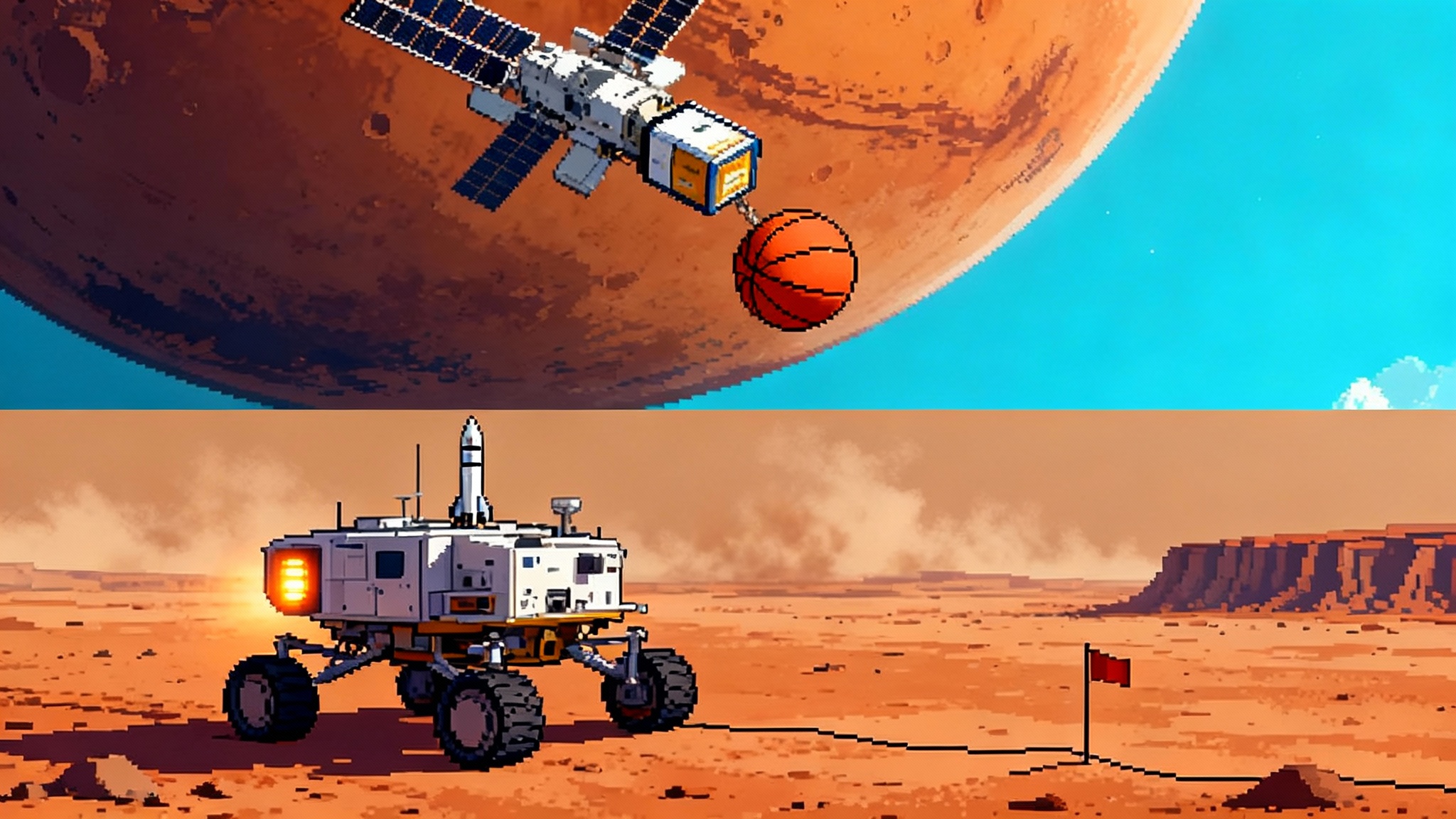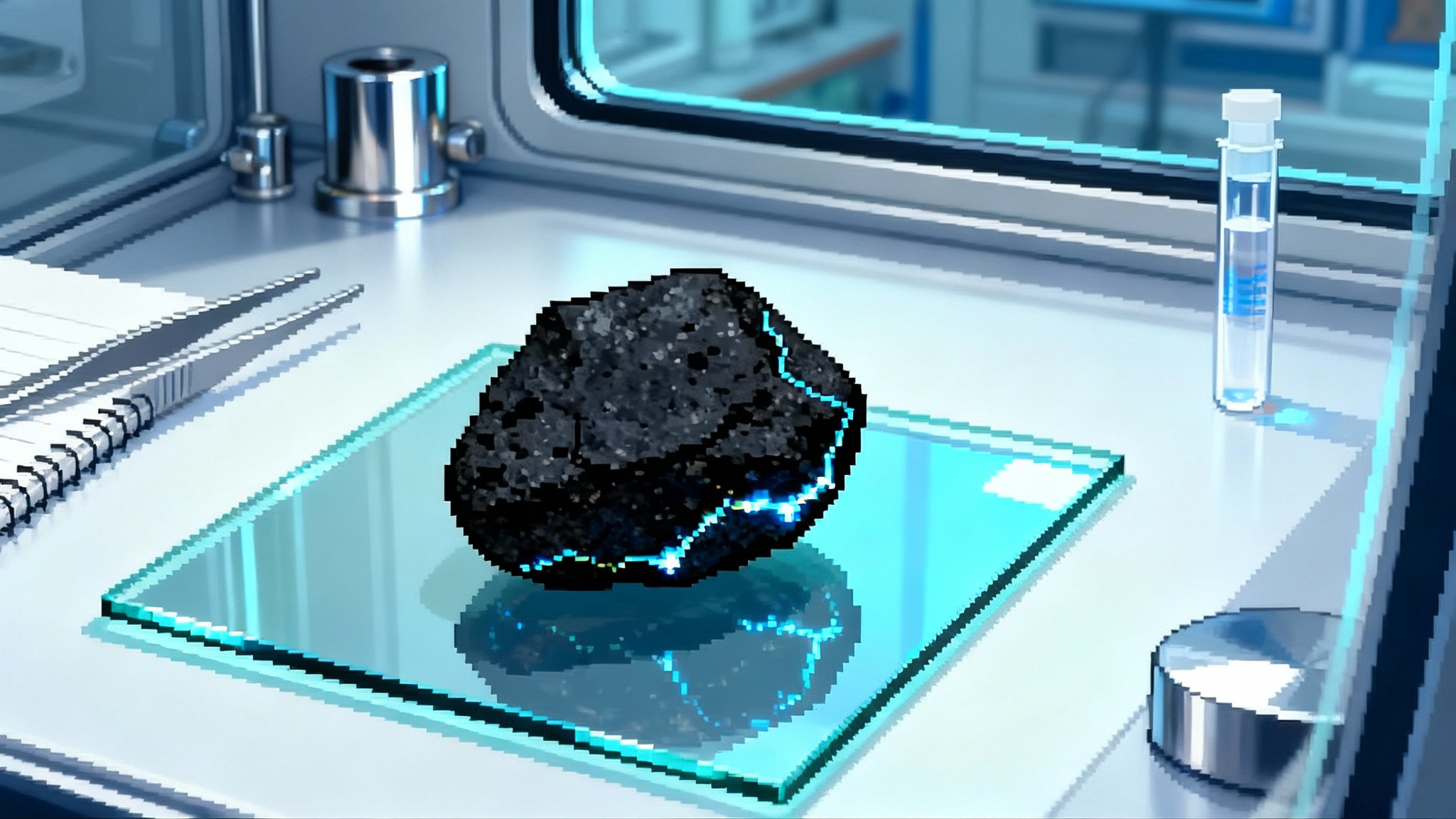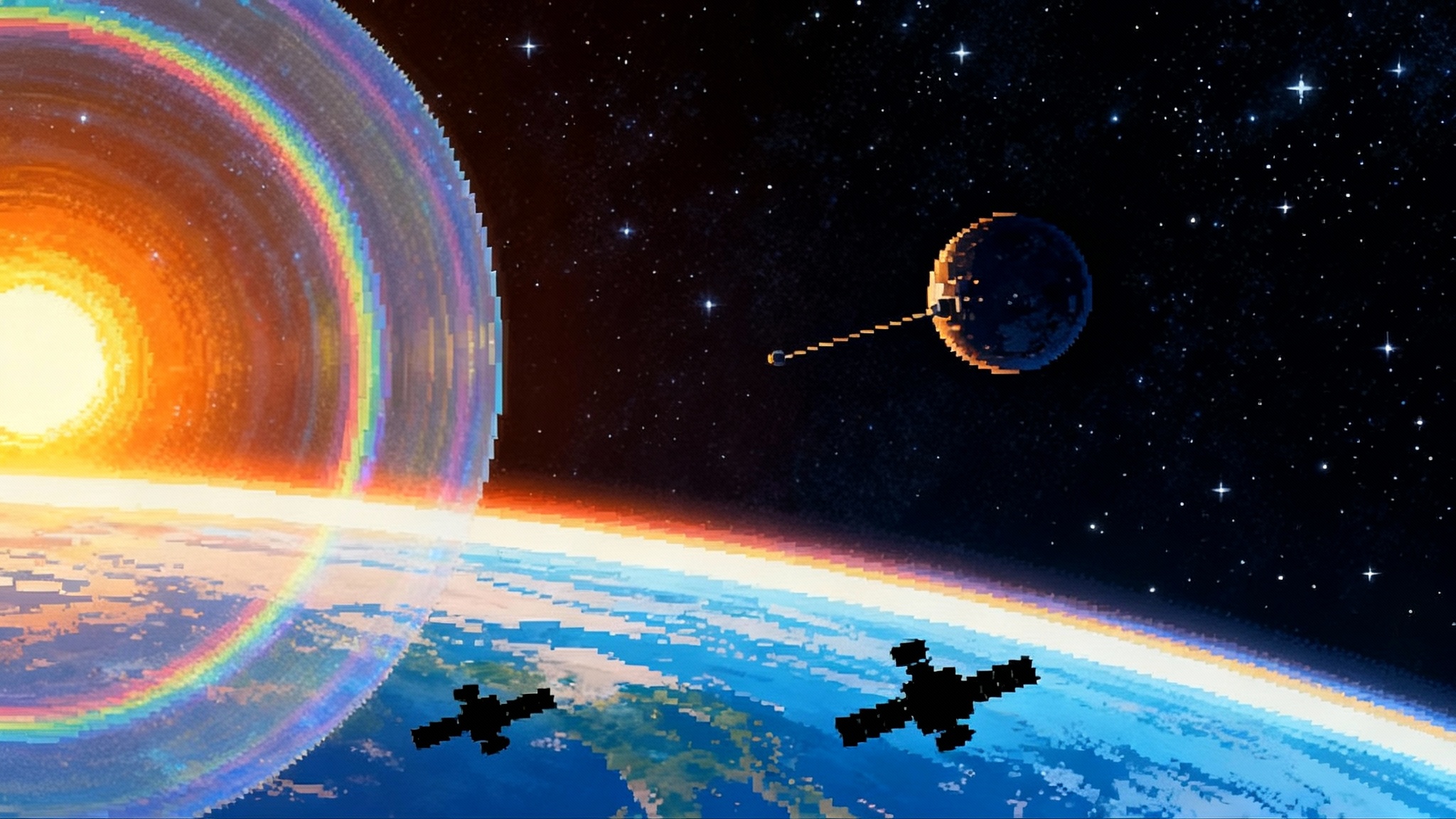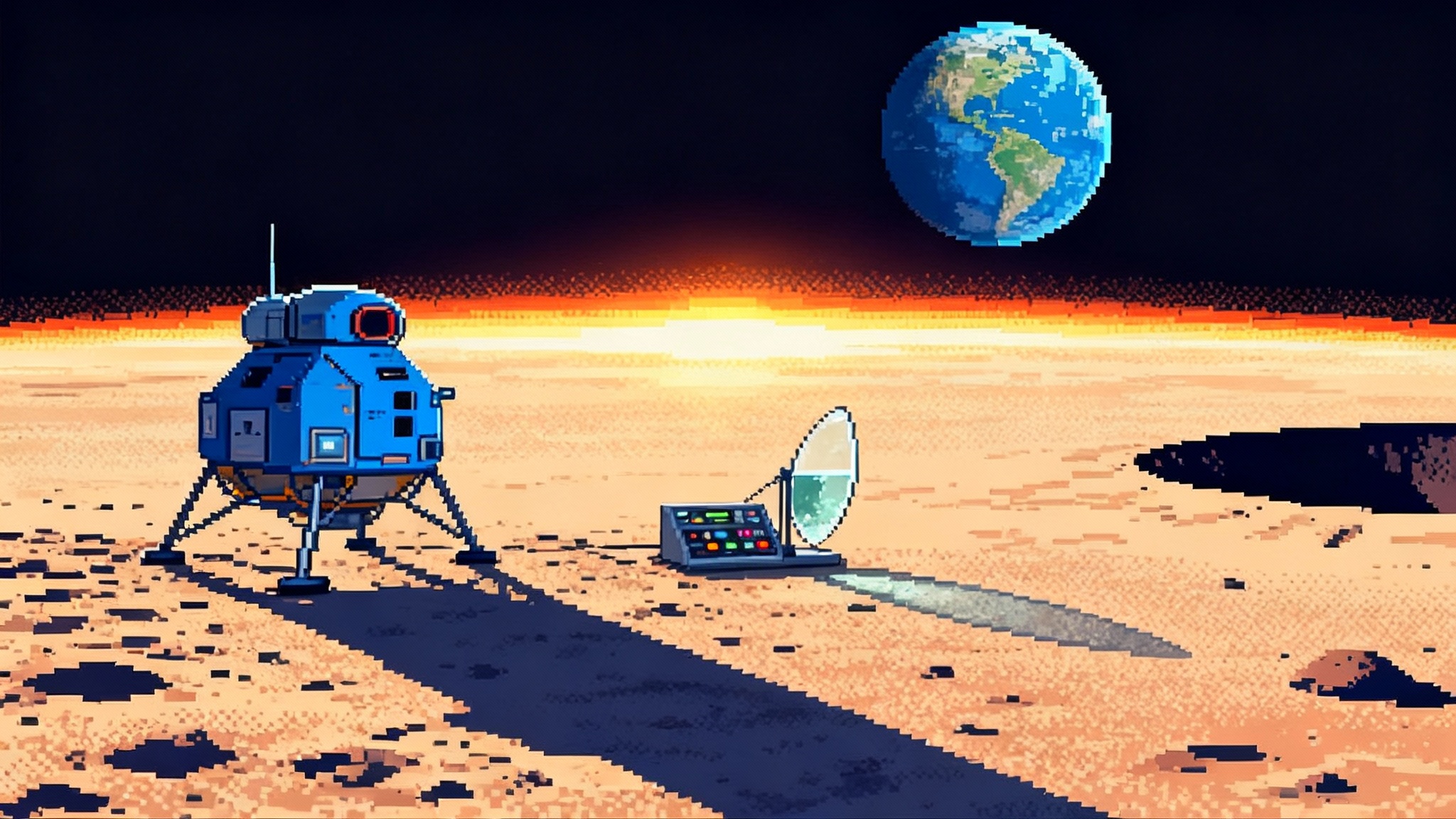 Space
Space
Articles under the Space category.
HTV-X1 Rewires ISS Supply Lines and Sets Sights on Gateway
Japan’s next‑gen cargo ship launched on H3, delivered on schedule, and keeps flying for months as a testbed—tightening the ISS supply chain today and training for Gateway tomorrow.
Tianwen-2 to Kamoʻoalewa, a Hinge Moment for Exploration
China's Tianwen-2 is en route to Earth's quasi-moon Kamoʻoalewa to bring home samples in 2027, then chase active comet 311P. Here is how this mission could confirm a lunar-fragment origin and reset small-body science, cislunar traffic norms, and prospecting.
Webb finds icy organics around a newborn star in the LMC
On October 20, 2025, JWST’s MIRI caught five complex organics frozen around a newborn star in the Large Magellanic Cloud, including the first secure ice detection of acetic acid. The find resets the timeline for prebiotic chemistry in harsh, low‑metallicity environments.
Proba-3 Switches On Artificial Solar Eclipses in Orbit
Two small ESA spacecraft are now creating hours-long artificial solar eclipses in orbit, opening the inner corona to routine study and promising sharper, earlier space-weather forecasts for operators on Earth.
Starship’s 2025 Pivot: From Test Shots to Real Payload Ops
Two late-summer flights turned Starship from spectacle into service. Here is how proven dummy deployments, tougher heat shields, and near-complete booster recovery set up rideshare payloads, depot demos, and cheaper cislunar logistics in 2026.
Mars Sample Return 2.0: Industry's Fast Track to the 2030s
NASA's 2025 reboot invites firm fixed price, industry-led architectures. From a lean Lockheed lander to a potential Starship-assisted delivery, the new playbook aims to bring Perseverance's samples home in the 2030s while cutting cost and risk.
Bennu’s 2025 surprise: OSIRIS‑REx sample rewrites life’s recipe
Peer-reviewed results released January 29, 2025 from NASA's OSIRIS-REx Bennu sample reveal abundant organics, ammonia-bearing compounds, all five nucleobases, and unusually pure, water-soluble phosphates. Here is why that shifts prebiotic chemistry from speculation to testable recipes and how the community can turn a headline into a foundation in 180 days.
Euclid’s First Data Shockwave Reshapes Dark Matter Maps
Euclid’s first public data are already changing dark matter science. Uniform imaging, open archives, and AI are turning strong lensing and galaxy morphology into high-throughput discovery, with Roman poised to accelerate the pace.
IMAP at L1: Mapping our heliosphere for deep-space weather
Launched on September 24, 2025, NASA’s IMAP is cruising to L1 with NOAA’s SWFO-L1 and NASA’s Carruthers observatory to turn last-minute solar alerts into mission-planning forecasts for Artemis and future Mars crews.
Rubin’s First Look Sparks a Real-Time Astronomy Revolution
On June 23, 2025, the Vera Rubin Observatory proved the sky can talk back in near real time. Here is how brokers, AI, and fast follow-up are about to change planetary defense and transient astronomy for everyone from labs to backyard observers.
3I/ATLAS Turns Mars to Jupiter Into a Pop-Up Observatory
As 3I/ATLAS sweeps past Mars toward Jupiter, space agencies are syncing Mars orbiters, ESA’s JUICE, and NASA’s Europa Clipper to watch its coma and tails in real time. The goal is a reusable playbook for the next interstellar visitor.
SPHEREx Goes Live: A 102-color Atlas of the Entire Sky
Launched in March 2025, NASA’s SPHEREx has taken first-light images and begun a two-year, 102-color all-sky infrared survey. Over the next year it will map water and organics, sharpen inflation-era cosmology, and supercharge rapid follow-ups with JWST, Euclid, and Rubin.
Tianwen-2 sets pace in the small‑body sample return race
China’s Tianwen-2 launched on May 29, 2025 toward Kamoʻoalewa, an Earth quasi-moon. If it returns about 100 grams by late 2027, the sample could test the lunar-fragment idea and reshape plans for chemistry, defense, and exploration.
New Glenn goes interplanetary: ESCAPADE readies Mars sprint
After reaching orbit on January 16, 2025, Blue Origin’s New Glenn is racing toward a second act: sending NASA’s twin ESCAPADE probes on a fast, lower-cost ride to Mars in an early November window. Here’s how a commercial heavy lifter, smallcraft design, and transfer vehicles are compressing deep-space timelines.
Deep-space laser internet begins: DSOC and ESA connect
A summer of interagency laser links turned a decade of demos into day one of operations. DSOC on Psyche and Europe's first cross-support show optical can deliver 10-100x more science by 2030.
Einstein Probe’s day-long GRB hints at hidden black holes
A rare, day-scale gamma-ray burst detected by Einstein Probe and Fermi kept flashing for 24 hours. New analysis suggests a shredded white dwarf and a jet from an intermediate-mass black hole, hinting at a new class of cosmic transients.
2025’s Lunar Pivot: Private Landers, Cellular, and Navigation
Two private landings, the first cellular network on the Moon, and a working lunar satnav demo turned 2025 into a year of operations, not experiments. See how CLPS changed pace and what to watch through 2027.
Exoplanet Weather Goes 3D with JWST's Map of WASP-18b
Astronomers just turned a single JWST eclipse into a full latitude–longitude–altitude map of WASP-18b, exposing a searing hotspot, a cooler ring at the edges, and water chemistry that changes with height. Here is how 3D eclipse mapping works and why it rewires our biosignature playbook.

















